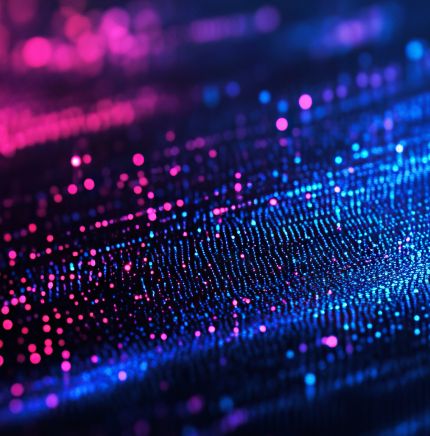

News
AI's role in sustainable material selection, energy efficiency, and waste reduction
Date: Aug 31 2025
Publication: yourstory.com
From choosing greener materials to improving energy efficiency and minimizing waste, AI is reshaping how we design and manufacture products, reducing the manual burden of taking educated guesses regarding long-term environmental impact.
The narrative on product design has gone through a significant shift in today’s world. At a time when technology and ethics intersect, global innovation has grown to incorporate sustainability as a critical element in modern product design, moving beyond the earlier notions of sustainability as a sidelined quality. As industries face rising pressure to reduce their environmental impact, Artificial Intelligence (AI) has emerged as a powerful enabler.
From choosing greener materials to improving energy efficiency and minimizing waste, AI is reshaping how we design and manufacture products, reducing the manual burden on taking educated guesses regarding long-term environmental impact.
Designing responsible material selection strategies
Sustainable design starts with choosing the right materials. Traditionally, this process has relied heavily on experience and limited data. AI changes the game by analyzing vast datasets from material properties to life cycle assessments (LCA). It can screen out high-impact materials and suggest environmentally friendlier alternatives tailored to performance needs.
For instance, in automotive design, AI might recommend multiple options such as replacing steel with lightweight composites or recycled polymers resulting in improved fuel efficiency and lower emissions. AI can also balance recycled and virgin materials to ensure quality without compromising sustainability. Such insights help designers to move beyond conventional choices and make data-driven decisions that align with both environmental goals and regulatory standards.
AI-driven energy efficiency in product design
Energy efficiency is a major consideration across industries and levels from appliances to buildings to transport; from materials to a product energy consumption. AI can simulate different design options and identify those that consume less energy throughout a product's lifecycle, allowing for more efficiency and productivity. Generative design algorithms, for example, explore numerous configurations that reduce material use while maintaining performance.
Smart appliances already use AI to optimize energy use based on user behavior. In air conditioners, for instance, AI can adjust cooling patterns based on sleep cycles and ambient temperature improving comfort while cutting energy use. Similarly, digital twins enable real-time modeling of a product’s performance through virtual replicas which are subjected to multiple conditions, helping teams identify potential improvements before physical prototypes are built.
Minimising waste and maximising resource use via AI interventions
Material waste remains a significant challenge. A product’s lifecycle is defined by inefficiencies and discarded material, which can lead to unnecessary crises. Inventory management is a major pain-point in supply chains. AI can improve inventory and supply chain management by accurately forecasting demand and identifying inefficiencies through the analysis of historical sales data, seasonal trends, and economic indicators, allowing companies to produce just enough, thereby minimizing the risk of overstocking and subsequent waste.
In manufacturing, AI-powered quality control systems can detect defects early, avoiding costly rework. This focuses on preventing errors than simply spotting them, reducing the amount of scrap used. Predictive maintenance tools forecast equipment failures, helping reduce unplanned downtime and scrap. Beyond the factory floor, AI benefits waste management through automated sorting systems that leverage machine learning to suggest how scrap materials can be repurposed effectively, boosting recycling rates and maintaining resource circulation.
The road ahead
As environmental concerns intensify and regulations tighten, AI will play an even greater role in making product development smarter and more sustainable. The real promise lies not just in optimizing processes, but in shifting mindsets. AI can help industries move from reactive compliance to a proactive innovative approach, where sustainability becomes a core design principle rather than an afterthought.
By empowering designers and manufacturers with deeper insights, faster simulations, and smarter tools, AI is not only improving the bottom line but is laying the foundation for a circular economy and a cleaner, more responsible future. This collaborative effort between human ingenuity and artificial intelligence helps build responsible mindsets and drive innovation accordingly.
Anup S.S. , Practice Head – AI & ML, Tata Elxsi






